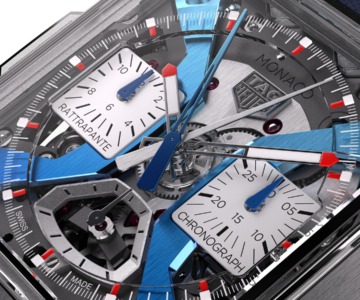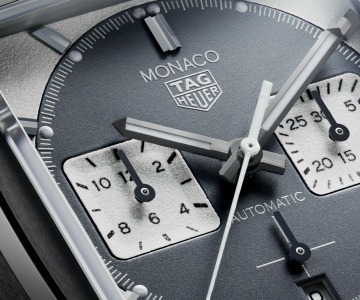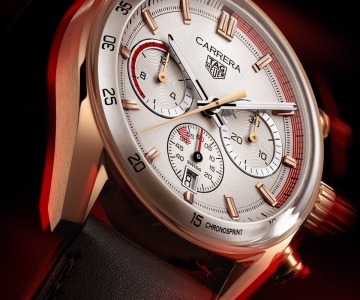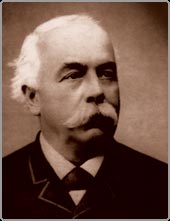
Toujours à la recherche de la précision, TAG Heuer est une manufacture de tradition très liée au sport et par ce fait à la performance. Son histoire est parsemée de découvertes qui repoussent toujours plus loin la quête de perfection.
A l’age de 20 ans en 1860, Édouard Heuer fonde une manufacture horlogère à Saint Imier dans le Jura Suisse. Dès 1883 la compagnie gagne une médaille d’argent lors du salon International à Amsterdam. En 1886 la maison invente le “pignon oscillant”. Deux ans après, Jules-Édouard Heuer, le fils d’Édouard Heuer, rejoint la direction de la compagnie. Cette même année la manufacture est récompensée par un brevet pour une montre à répétition .
L’année suivante en 1888, la marque reçoit une médaille d’argent pour sa 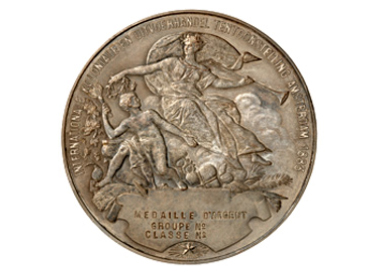 collection de chrono graphe de poche à l’exposition universelle de Paris. En 1891 Édouard Heure dévasté par la mort de sa fille Louise-Honorine Heure, laisse le contrôle de la société à son fils. Un malheur n’arrivant pas seul, Édouard Heuer meurt l’année suivante le 30 avril à l’age de 52 ans. Mais les innovations ne s’arrêtent pas pour autant, en 1895 la maison est récompensée par un brevet pour un boitier water-resistant. En 1908, la compagnie obtient un brevet pour un pulsomètre qui est encore utilisé de nos jours par les médecins. En 1910 la manufacture Heuer par à la conquête de l’Amérique en confiant la direction du marché
collection de chrono graphe de poche à l’exposition universelle de Paris. En 1891 Édouard Heure dévasté par la mort de sa fille Louise-Honorine Heure, laisse le contrôle de la société à son fils. Un malheur n’arrivant pas seul, Édouard Heuer meurt l’année suivante le 30 avril à l’age de 52 ans. Mais les innovations ne s’arrêtent pas pour autant, en 1895 la maison est récompensée par un brevet pour un boitier water-resistant. En 1908, la compagnie obtient un brevet pour un pulsomètre qui est encore utilisé de nos jours par les médecins. En 1910 la manufacture Heuer par à la conquête de l’Amérique en confiant la direction du marché 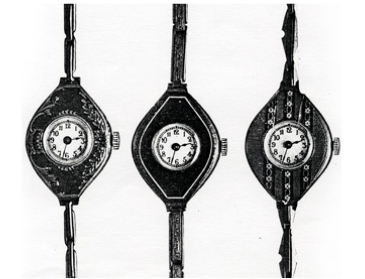 américain à Henri Freund & Bros. Dès 1912 Heuer débute sa production de montre-bracelets pour femme, cette année marque également l’apparition du logo Heuer. En 1914 la maison crée ses premiers montres-bracelet chronographes. Deux ans après la maison crée le premier chronomètre avec une précision 1/100ème, la « Microsplit », puis le « Semicrograph » précis au 1/50ème.En 1920 le chronographe à rattrapante de la maison Heuer est choisit officiellement pour comme instruments officiels de chronométrage pour les Jeux Olympiques d’Anvers. Elle conservera ce titre durant les deux jeux olympiques suivants, à Paris en 1924 et à Amsterdam en 1928.
américain à Henri Freund & Bros. Dès 1912 Heuer débute sa production de montre-bracelets pour femme, cette année marque également l’apparition du logo Heuer. En 1914 la maison crée ses premiers montres-bracelet chronographes. Deux ans après la maison crée le premier chronomètre avec une précision 1/100ème, la « Microsplit », puis le « Semicrograph » précis au 1/50ème.En 1920 le chronographe à rattrapante de la maison Heuer est choisit officiellement pour comme instruments officiels de chronométrage pour les Jeux Olympiques d’Anvers. Elle conservera ce titre durant les deux jeux olympiques suivants, à Paris en 1924 et à Amsterdam en 1928.
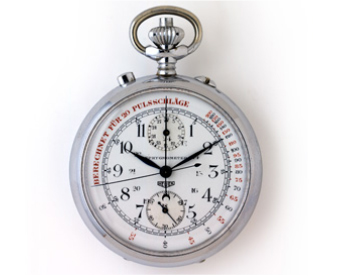 En 1933 la maison Heuer lance l’Autavia, le premier compteur pour les tableaux de bord de voiture et d’avion couplé le plus souvent à une Hervue dont l’autonomie est de 8jours.
En 1933 la maison Heuer lance l’Autavia, le premier compteur pour les tableaux de bord de voiture et d’avion couplé le plus souvent à une Hervue dont l’autonomie est de 8jours.
1934 marque pour Heuer la première participation à la foire de Bâle.
Les années qui suivirent furent décisive pour l’image de la marque puisque des grands noms de l’élite mondiale porte une montre Heuer comme le prince William de Suède, Harry S. Truman ou encore le général Eisenhower.
1949 est l’année du lancement du « Maréographe », le premier chronographe doté d’un indicateur de marée.
En 1962 la maison part à la conquête de l’espace puisque l’astronaute John Glenn effectue trois fois le tour de la terre à bord de la capsule “Mercury Friendship 7” avec à son poignet un compteur de sport Heuer. En 1964 la maison Heuer lance un modèle qui va devenir un classique de la marque, le chronographe Carrera, en hommage à la course de rallye Carrera Panamericana des années 50.
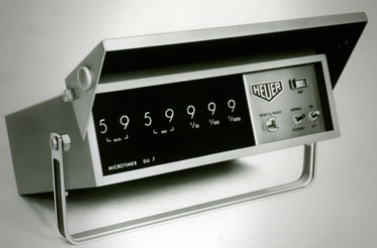 Deux ans après Heuer présente le « Microtimer » le premier instrument électronique miniaturisé avec une précision de 1/1000ème.
Deux ans après Heuer présente le « Microtimer » le premier instrument électronique miniaturisé avec une précision de 1/1000ème.
En 1969, avec le lancement du Chronomatic Calibre 11, le premier mouvement chronographe automatique avec Microrotor, et de la mythique Monaco qui va conquérir Hollywood grâce à Steve McQueen.
Les années qui suivirent marquèrent le lancement du Microsplit 800 en 1972, premier compteur de sport à quartz au monde en format de poche à offrir une précision au 1/10ème de seconde, du lancement du Chronosplit en 1975, le premier chronographe-bracelet à quartz au monde avec affichage LCD/LED, précis au 1/10ème de seconde.
En 1985, Akram Ojjeh directeur du groupe saoudien TAG rachète Heuer.
C’est ainsi que la société fut rebaptisée TAG Heuer et qu’elle devint une filiale du Groupe TAG, actionnaire notamment de l’écurie de F1 McLaren.
En 1999 c’est le groupe LVMH qui devient propriétaire de la maison TAG Heuer et de part ce fait n’est plus coté en bourse. L’année 2003 marque le lancement de la microtimer véritable instrument de chronométrage de poignet précis au 1/1000ème de seconde.
L’année d’après est celle du succès avec la présentation du Concept chronograph Monaco V4 lors de la Foire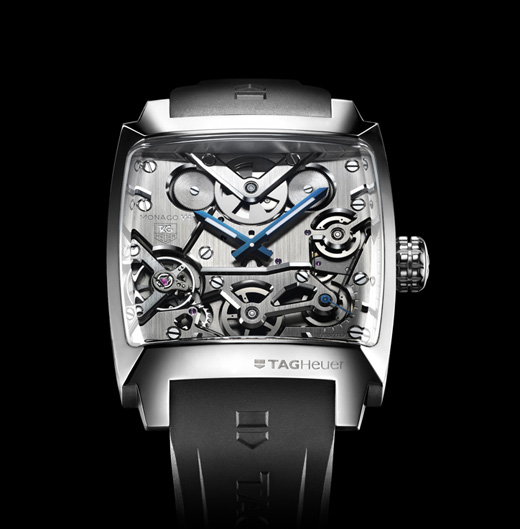 de Bâle et la Monaco 69 qui remporte le Grand Prix d’Horlogerie de Genève dans la catégorie du meilleur design. Toujours en quête de précision TAG Heuer présente en 2005 le Calibre 360 Concept Chronograph, premier chronographe de poignet mécanique précis au 1/100ème de seconde. En 2007, la maison horlogère lance le Calibre S muni d’un mouvement électro-mécanique précis au 1/10e de seconde. Cette technologie fait appel à 230 composants et 5 moteurs bidirectionnels. Cette même année l’Aquaracer Calibre S Regatta remporte le Popular Science’s “Best of What’s New” sur la liste des 100 plus importantes révolutions technologiques des 20 prochaines années.
de Bâle et la Monaco 69 qui remporte le Grand Prix d’Horlogerie de Genève dans la catégorie du meilleur design. Toujours en quête de précision TAG Heuer présente en 2005 le Calibre 360 Concept Chronograph, premier chronographe de poignet mécanique précis au 1/100ème de seconde. En 2007, la maison horlogère lance le Calibre S muni d’un mouvement électro-mécanique précis au 1/10e de seconde. Cette technologie fait appel à 230 composants et 5 moteurs bidirectionnels. Cette même année l’Aquaracer Calibre S Regatta remporte le Popular Science’s “Best of What’s New” sur la liste des 100 plus importantes révolutions technologiques des 20 prochaines années.
TAG Heuer lance la Grand CARRERA, un modèle doté du Calibre RS, le premier mouvement mécanique avec Rotating Systems.
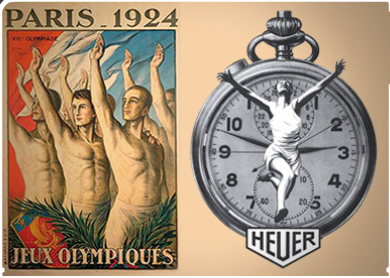 At the age of 20 years in 1860, Édouard Heuer founds a watchmaking factory in Saint Imier in the Switzerland (Jura). In 1883 the company wins a silver medal at the International exhibition of Amsterdam. In 1886 the factory invents the “oscillating pinion”. Two years after, Jules-Édouard Heuer, the Édouard Heuer’s son, joined the direction of the company. The same year, the company is awarded a patent for a repeater watch. The following year in 1888, the firm wins a silver medal at the Universal Exhibition in Paris for its collection of pocket chronograph. In 1891 Édouard Heuer, devastated by his daughter’s death Louise-Honorine Hour, let the control of the company to his son. He dies the following year on April 30th at the age of 52 years. In 1895 the company is awarded a patent for a water-resistant case. In 1908, the company obtains a patent for a pulsomètre dial still used today by doctors. In 1910 Heuer wants to conquer the american markets, Henri Freund & Bros is nominated to the American business directory. Since 1912 Heuer has been producing wristwatches for ladies. At the same year the Heuer logo also appeared. In 1914 the firm creates its first wrist-worn chronographs. Two years later the firm creates the first chronometer with a precision of 1/100th, the ” Microsplit “; and the ” Semicrograph ” with a precision of 1/50th .In 1920 the Heuer’s chronograph is
At the age of 20 years in 1860, Édouard Heuer founds a watchmaking factory in Saint Imier in the Switzerland (Jura). In 1883 the company wins a silver medal at the International exhibition of Amsterdam. In 1886 the factory invents the “oscillating pinion”. Two years after, Jules-Édouard Heuer, the Édouard Heuer’s son, joined the direction of the company. The same year, the company is awarded a patent for a repeater watch. The following year in 1888, the firm wins a silver medal at the Universal Exhibition in Paris for its collection of pocket chronograph. In 1891 Édouard Heuer, devastated by his daughter’s death Louise-Honorine Hour, let the control of the company to his son. He dies the following year on April 30th at the age of 52 years. In 1895 the company is awarded a patent for a water-resistant case. In 1908, the company obtains a patent for a pulsomètre dial still used today by doctors. In 1910 Heuer wants to conquer the american markets, Henri Freund & Bros is nominated to the American business directory. Since 1912 Heuer has been producing wristwatches for ladies. At the same year the Heuer logo also appeared. In 1914 the firm creates its first wrist-worn chronographs. Two years later the firm creates the first chronometer with a precision of 1/100th, the ” Microsplit “; and the ” Semicrograph ” with a precision of 1/50th .In 1920 the Heuer’s chronograph is 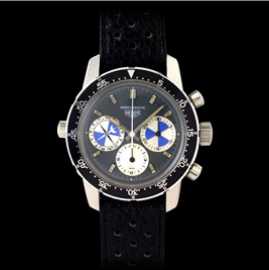 selected as official stopwatches at the Antwerp Olympic Games. The firm kept this title during the two following Olympic games: in Paris in 1924 and in Amsterdam in 1928.
selected as official stopwatches at the Antwerp Olympic Games. The firm kept this title during the two following Olympic games: in Paris in 1924 and in Amsterdam in 1928.In 1933 the firm created the Autavia, the first dashboard instrument for automobile and aviation featured an 8-day movement, the Hervue dashboard.
1934 marks for Heuer its first participation at the Basel watchmaking fair.
The following years were decisive for the image of the firm, many names of the world’s elite wear a Heuer watch as prince William of Sweden, Harry S. Truman or the general Eisenhower.
1949 is the year of the introducing of the ” Mareograph “, the world’s first chronograph with a tide level indicator. In 1962 Jack Heuer launches the “Carrera” as a tribute to “Carrera Panamerican Rally” of the 50’s.
Two years after Heuer introduces the ” Microtimer ” the first electronic instrument miniaturized with a precision of 1/1000th.
1969 is the year of the launch of the Chronomatic Calibre 11- the first automatic chronograph movement with a Micro-rotor, and the “Monaco” – that is going to conquer Hollywood with Steve McQueen.
The following years were marked by the launch of the Microsplit 800 in 1972, the first sport meter with quartz to offer a precision of 1/10th of a second, the launching of the Chronosplit in 1975, the first wristwatch quartz chronograph with LCD/LED display, with a precision of 1/10th of a second.
In 1985, Akram Ojjeh leader of the Saudi group TAG purchases Heuer.
This is how the house was renamed TAG Heuer and became a subsidiary of the TAG Group, shareholder of F1 McLaren. In 1999 it is LVMH group which has become the owner of TAG Heuer.
The year 2003 marks the launch of the microtimer, the first Swiss Wirst timekeeping Instrument accurate to 1/1000th of a second.
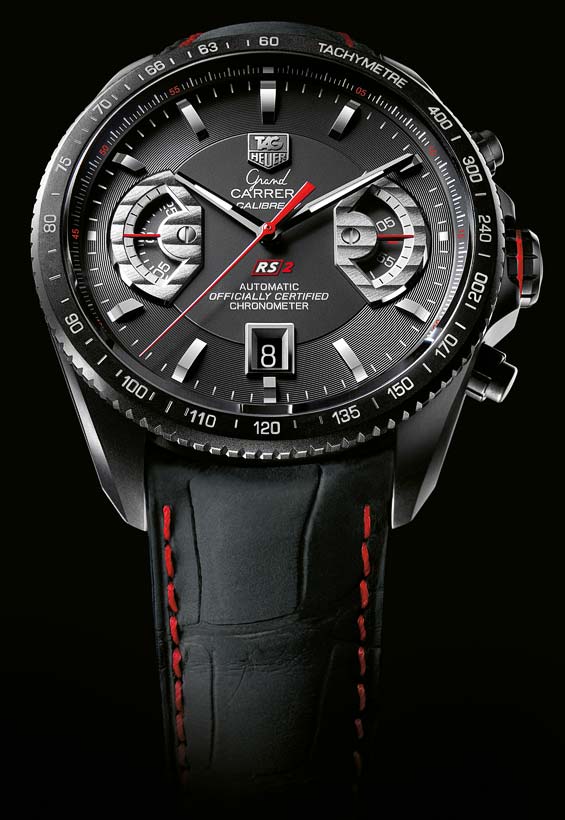 The year after was successful with the presentation of the Concept chronograph Monaco V4 at the Baselworld, and the Monaco 69 – which wins the Big Price of Watchmaking of Geneva for its design.
The year after was successful with the presentation of the Concept chronograph Monaco V4 at the Baselworld, and the Monaco 69 – which wins the Big Price of Watchmaking of Geneva for its design.
In constant quest of precision TAG Heuer introduces in 2005 the Caliber 360 Concept Chronograph, first mechanical chronograph with a precision of 1/100th of a second. In 2007, the firm launches the Caliber S, which provide a precision of 1/10th of second. This technology calls for 230 components and 5 bi-directional motors. This same year the Aquaracer Calibrates S Regatta receives Best of What’s New Award from Popular Science Magazine, and is listed as one of the top 100 technological innovations of the next 20 years.TAG Heuer introduces the « Grand CARRERA », the model has at its disposal the RS Caliber, the first mechanical movement with Rotating Systems.

